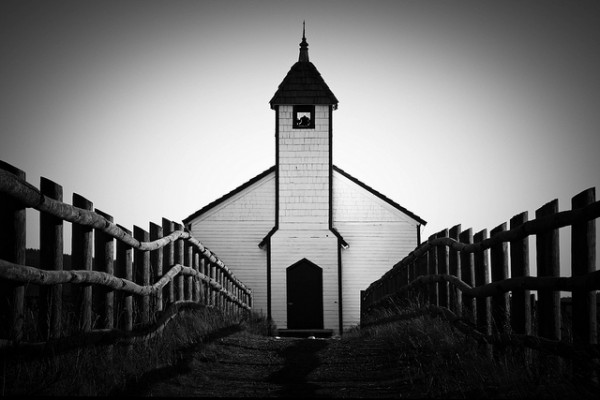
Martin Luther King, Jr. once said that “at eleven o’clock on Sunday morning… we stand in the most segregated hour of America.” From “kneel-ins” of the civil rights era to surveys and think pieces today, we often talk religious segregation as the result of individual choices: what do congregants want from church? How do they choose a church, and why do they leave? How do they work for change when church doesn’t work for them? New research from Bradley Wright and colleagues, however, reminds us that larger institutional and cultural factors that keep churches segregated.
The authors set out to ask whether churches themselves were less likely to welcome new members from different racial groups. They drew a national sample of 3,120 churches to cover mainline Protestant, evangelical Protestant, and Catholic denominations, and they sent each a form email from a family planning to move into the area and looking for more information about the church. In each email, they randomly changed the name of the sender to suggest that they were White, Black, Hispanic, or Asian. They then measured whether the church office responded, how many follow-up emails they sent, how long responses took, and the length, warmth, religious tone, and the quality of information for each email response.
Their tests revealed some surprising results. Evangelical and Catholic churches did not show significant differences in their response rates, but mainline Protestant churches were significantly more likely to respond to inquiries from white senders. Black senders were 11% less likely to get a response, Hispanics were 14% less likely, and Asians were 27% less likely than Whites. Mainline Protestant churches also took significantly longer to respond to senders of color, and when they did their responses had lower quality information and were more likely to be terse—offering only one or two sentences that did not directly address the senders’ questions.
This research reminds us that racial homophily—the preference for a community where everyone looks the same—is not just a matter of individual choices. It is baked into institutional processes, and it often persists in fairly mainstream, moderate groups where people just want to feel “normal” and avoid conflict. For American religion, it isn’t just about who chooses the pews; we have to look at who builds them, too.

Comments